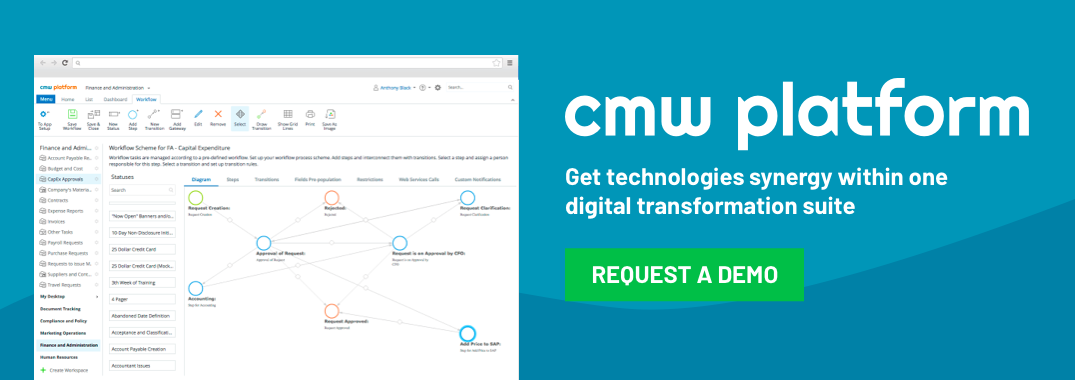Manage Unstructured Business Processes
April 12, 2024
Process management states that you have structured and unstructured processes in your business, whether you discover them or not, they are simply taking place. Structured processes are most often typical, like client support tickets or bug fixing: they repeat the workflow scheme each time and don’t involve a lot of collaboration or decision-taking.

Unstructured processes involve decision taking, discussion, and professional collaboration in order to deliver process results. Due to the nature of the process, its structure can be slightly different each time so it is quite difficult to describe this process once, set corporate rules on it, or automate this process inside business software as is the case with structured business processes which are largely automated with the help of ERP and CRM software.
For example, your company plans to adapt the BYOD policy which describes how your employees can use their own devices for work, including corporate rules, IT security requirements and so on. How exactly will the CIO, HR and CTO collaborate on this task? There is definitely some process behind it, yet you cannot say what it will look like until it’s over.
However unstructured the process is, it doesn’t mean that the process cannot be described, optimized or automated. It simply needs a different approach which adapts to the unpredictability of the process.
Managing structured processes by email or with the help of Excel files has proven to be inefficient and we see these kind of processes automated in large companies with the help of ERP and CRM systems. Meanwhile, unstructured process are quite often left ‘untouched’ and just ‘happen’ ad-hoc, without any possible optimization. Why? Unstructured processes can be managed, controlled, optimized and improved as well as any other kind of processes it’s just a matter of the right approach which has to include three basic steps:
- discover the process
- optimize it
- choose the right software for its automation
Discovering unstructured processes
Unstructured processes are harder than structured processes to discover and manage. This is not only due to their unpredictability, but because they lack transparency too: they are done with the help of emails and meetings. Of course you can analyze the emails and meetings that you have to manage, yet an easier way is to take a closer look at the activities that most often imply unstructured processes.
“However unstructured the process is, it doesn’t mean that the process cannot be described, optimized or automated.”
An important part of unstructured processes (and what basically makes them unstructured) is decision taking. Unstructured processes involve collaboration and, sometimes, crowdsourcing, and they are always the human-driven processes. Typically, you can find unstructured processes in the following areas:
- Compliance and policy
- Exceptions and Escalation processes
- Audit processes
- Complex Project Management processes
- Decision Implementation processes
Optimization of unstructured processes
Unstructured processes, after they are detected, cannot be optimized in a one single way that must be obeyed by all of the process participants. Its optimization should be done in an advisory manor. Yet there might be iterations that are carried out by email and could be cut out with the help of one brief meeting or by using any online collaboration tool. An important part of the optimization of unstructured processes would be the use of special process management software.
Software for unstructured processes
Enterprise-scale systems for ERP and CRM traditionally come with hard-coded processes which can be implemented once and forever because their further modifications are impossible or are time-consuming and expensive. That can be explained by the nature of databases used by these systems: they are not only big, they are highly complicated which results in their heaviness and lack of flexibility.
Comindware Tracker is an enterprise-scale process management system which is based on a completely different type of database. As a result, it adapts to the process on the fly and it is almost ideal for unstructured processes management: whenever you need a new step in your process workflow, or a new task, a new participant, a new workflow form field – you can simply add it with no coding, and the process will keep running.
As for the structured processes, Comindware Tracker offers a set of professional templates and solutions.

